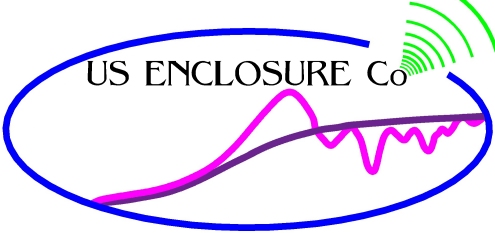
PRODUCTS AND SERVICES
ADDITIONAL PRODUCTS / SERVICES
OUR TECHNOLOGY
FEATURES ADVANTAGES BENEFITS
TESTIMONIALS
BACKGROUND AND HISTORY
 |
CONTACT PRODUCTS AND SERVICES ADDITIONAL PRODUCTS / SERVICES |
OEM
INFORMATION OUR TECHNOLOGY FEATURES ADVANTAGES BENEFITS |
IMAGE
GALLERY TESTIMONIALS BACKGROUND AND HISTORY |
| Acoustic Soundproofing Coatings | ||
Over the past 20 years US Enclosure has developed a proprietary series of acoustic-soundproofing and vibration-damping coatings. We do not repackage or private label any other company's products. These coatings can be customized for our clients specific acoustic control or vibration dampening needs. Sound Absorption Coefficients Most if not all available Acoustic Soundproofing Coating are very good materials. Nonetheless, many, but not all, Are Relabeled Products that happen to have good soundproofing properties. The relabeled products generally are super-up charged ( $15 gallon Caulk re- labeled as soundproofing for $150 /gallon) or merely repackaged Butyl Synthetic Rubber based nondrying construction adhesive-sealants. US Enclosure specifically material engineers our coatings to be designed only for acoustic and vibration dampening purposes. Many of our products are waterbase and carry a fair price. Your soundproofing / vibration control materials are based upon extensive acoustical physics research and contain components found in no other soundproofing. The material additives are chosen using proportional Possians Ratio's, Material Densities, Young's Modulus of Elasticity, Ultimate Tensile Strength, and Non Newtonian Fluid Dynamics.
We provide a series of products for specific soundproofing and vibration control applications: Coatings for interiors of loudspeaker cabinets Coatings for Rooms Coatings for Industrial Sound Reduction Applications Coatings for Ships Coatings for Equipment Which can be either: Spray-On Brush or Roll-On Our products, if necessary will exceed 200 pounds per cubic foot-- double the density of any other product while retaining a flexible material quality Naturally the coating can be 50 percent thinner for the same level of dampening or the thickness can be increased to totally erase sound and vibration issues. Nonetheless, our materials are not density-based for vibration and soundwave control. As noted, they are based on specific materials blended each of which has critical absorption in a frequency band. Applications include: Noise Control / Soundproofing and Acoustical Products for OEM, Commercial and Industrial, Pro Audio, Educational, House of Worship,and other applications-- all of which can be applied room to room, floor to floor, ceiling plenum, as well as for industrial noise control or outdoor related issues. |
|
US Enclosure material engineers our products using : Young's modulus, also known as the tensile modulus or
elastic modulus. Young's modulus is
the most common elastic modulus, sometimes called the modulus of elasticity,
but there are other elastic moduli measured, too, such as the bulk modulus
and the shear modulus. Elastic
modulus, or modulus of elasticity, is the mathematical description of an object
or substance's tendency to be deformed elastically (i.e., non-permanently) when
a force is applied to it. The Bulk
Modulus (K) describes volumetric elasticity, or the tendency of an object to
deform in all directions when uniformly loaded in all directions; it is defined
as volumetric stress over volumetric strain, and is the inverse of
compressibility. The bulk modulus is an extension of Young's modulus to three
dimensions. In linear elasticity, the Lamé
parameters are the two parameters • λ, also called Lamé's first parameter • μ, the shear modulus or Lamé's second parameter
(also referred to as G) • In homogeneous and isotropic materials, these satisfy
Hooke's law in 3D, In linear elasticity, the P-wave modulus, also known as the longitudinal modulus or the constrained modulus, is one of the elastic moduli available to describe isotropic homogeneous materials. It is defined as the ratio of axial stress to axial strain in a uniaxial strain state. |